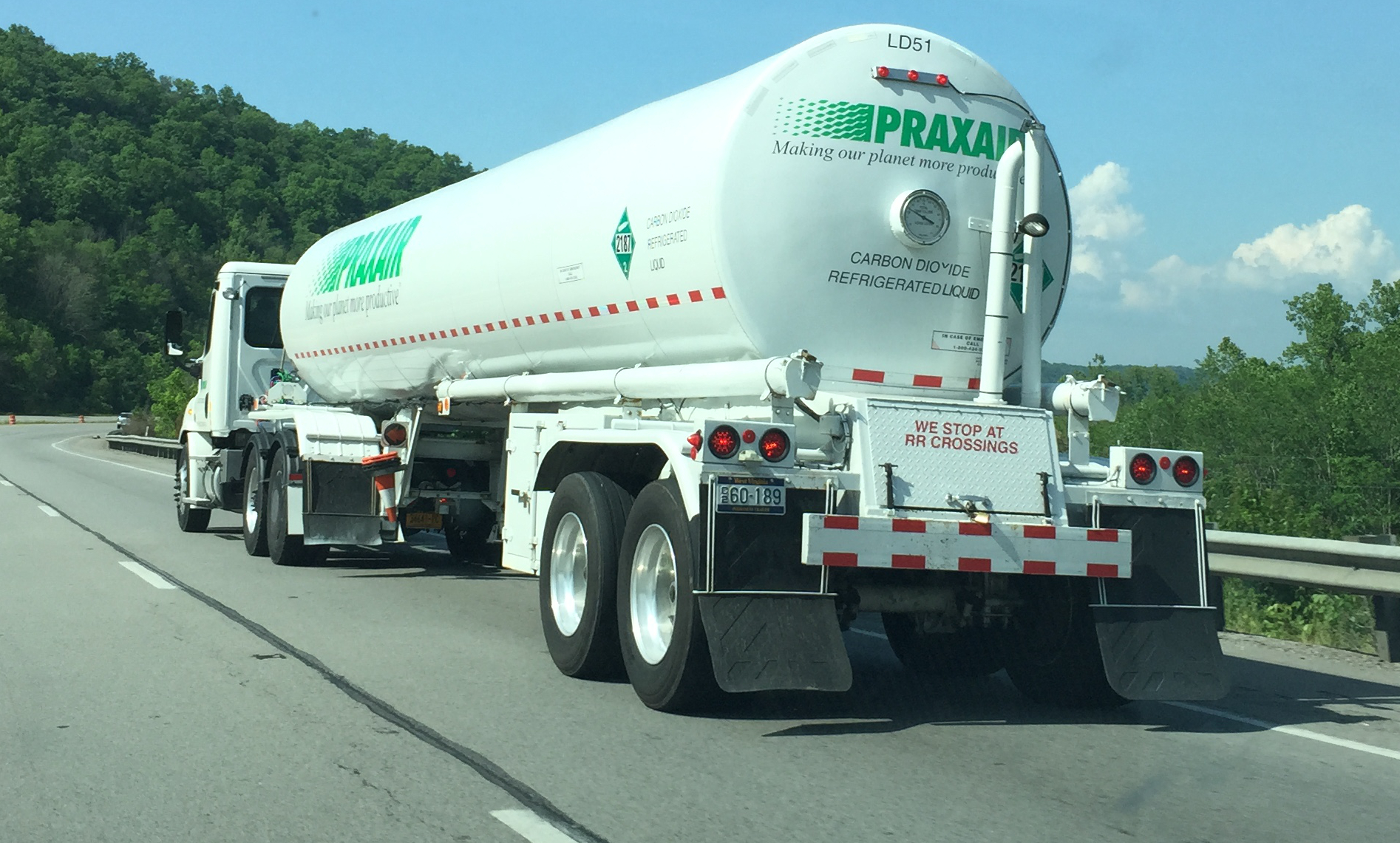In the May edition of the Michigan Oil & Gas Monthly (MOGM) we see something relatively new in the Michigan Basin: hydraulic fracturing with carbon dioxide (CO2). The nomenclature itself sounds funny because CO2 is not water and therefore the word hydraulic seems out of place. RMP has recently acquired the Record of Well Completion for the State Sherman & Forshee & Cooper 1-33A well in Sherman Township Michigan in Osceola county. The well was fracture stimulated with 51 tons of liquid CO2 and 10,500# of ceramic proppant in December of 2014. The initial flowback production from the Prarie Du Chien formation was 120 BOPD and 1.5 MMCFD of natural gas. In our February MOGM edition we were watching a company called GasFrac who is fracing using hydrocarbons. Fracing using CO2 is similar in that both methods are waterless. Click here to open a new tab in your browser to see the State Sherman & Forshee & Cooper 1-33A well on our interactive map.
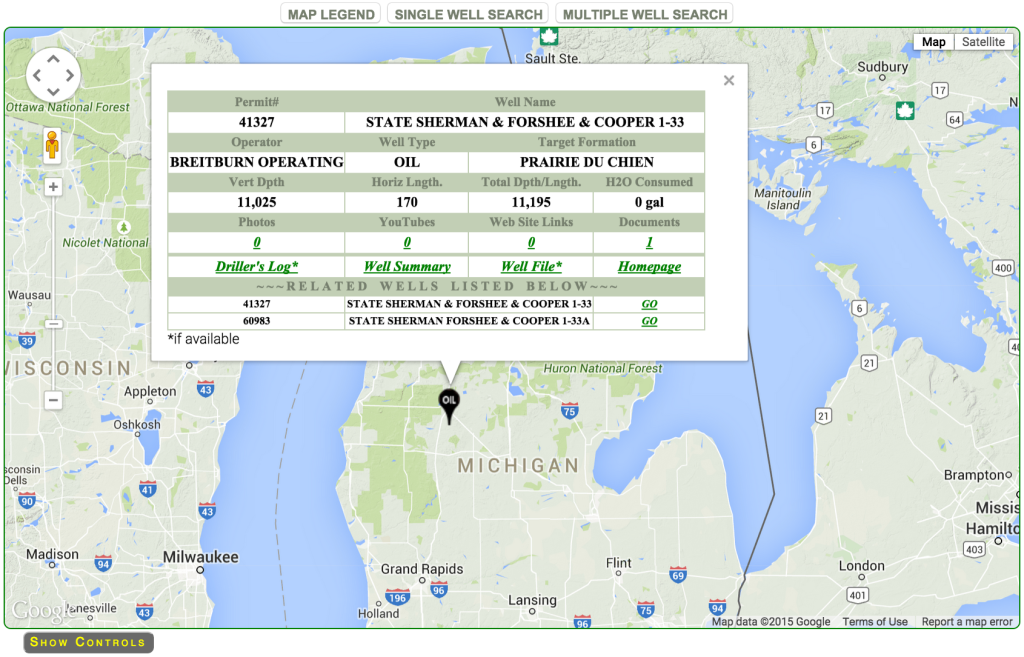
If you’ve been paying attention to the clues over the past couple years, it is not surprising to hear of a Michigan well being fracture stimulated using CO2. In 2012 we heard our first clue about CO2 when Governor Rick Snyder said “I am asking the Legislature to enact a law that will grant carbon dioxide pipelines the same legal standing as other pipelines in Michigan to make sure our state laws are ready for this new industry.” The Governor talked about Bob Mannes and Core Energy’s ambition to use CO2 for enhanced oil recovery in depleted Niagaran Pinnacle Reef formations. EOR operations to sequester CO2 are an important part of world energy solutions that you will continue to hear more about right here at this website. RMP is studying CO2 sequestration (CCS) and IGCC technology and is a steadfast supporter of making sure this important technology is advanced to help countries like the United States of America, China, and India produce power with fewer negative environmental impacts. With coal use expected to increase across the globe through the coming years, it is important that we all play a part in supporting cost effective CO2 capture & sequestration and eliminate atmospheric emissions of mercury and sulfur.
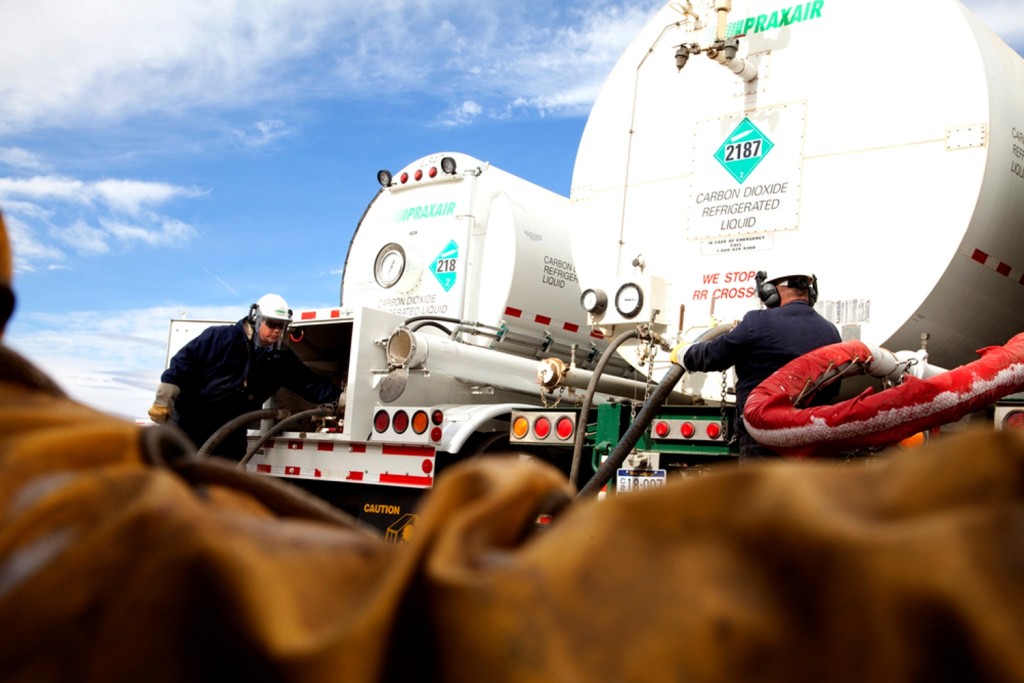
RMP received its 2nd clue about fracture stimulation using CO2 in September of 2013 when the Graham Sustainability Institute at the University of Michigan presented a webinar on Hydraulic Fracturing in Michigan. At the 28:25 mark of the video presentation of the webinar, Johannes Schwank talks about well stimulations and says:
most operations rely on water as the primary fluid being used to stimulate the wells. However, there are other possibilities such as, for example, carbon dioxide that could be used and some liquefied gasses like propane and so on and so on…
Now, a couple of years later, we start to see field evidence of what Professor Schwank was talking about.
Secondary recovery (EOR) using CO2 is not necessarily the same thing as fracing with CO2. Fracing with CO2 is similar to fracing with water with the exception that liquid CO2 is used instead of water. The fracing fluid, in this case CO2, will flow back to the surface in the same manner that waste water would flow back to the surface. According to a phone conversation with the MDEQ area geologist Amy Rivest, who has OOGM jurisdiction in Osceola county over the Sherman well, the 51 tons of CO2 and associated hydrocarbon flowback was processed with existing flowlines and processing equipment on the original well; this means the formation CO2 along with the 51 tons used to frac gets released to the atmosphere before hydrocarbons are sold to the market.
If you want to learn more about hydraulic fracturing technology with CO2, you can check out DryFrac by Praxair. Praxair, headquartered in Danbury Connecticut, launched a product called DryFrac in September of 2014. I don’t know if DryFrac was used for the Sherman well in December, but conceptually the process would be the same. You can read their brochure and watch a video about DryFrac here. CO2 fracing is appealing to operators for formations where water can cause damage, where water can cause swelling in clay, and where water inhibits flowback because of capillary pressure greater than that of formation pressure. From an environmental perspective, CO2 fracing can be considered more environmentally friendly than using freshwater but risks to ground water still exist. Furthermore, it is important that CO2 fracing should have a plan to capture the CO2 as it flows back to the surface or it becomes more greenhouse gas in the atmosphere.
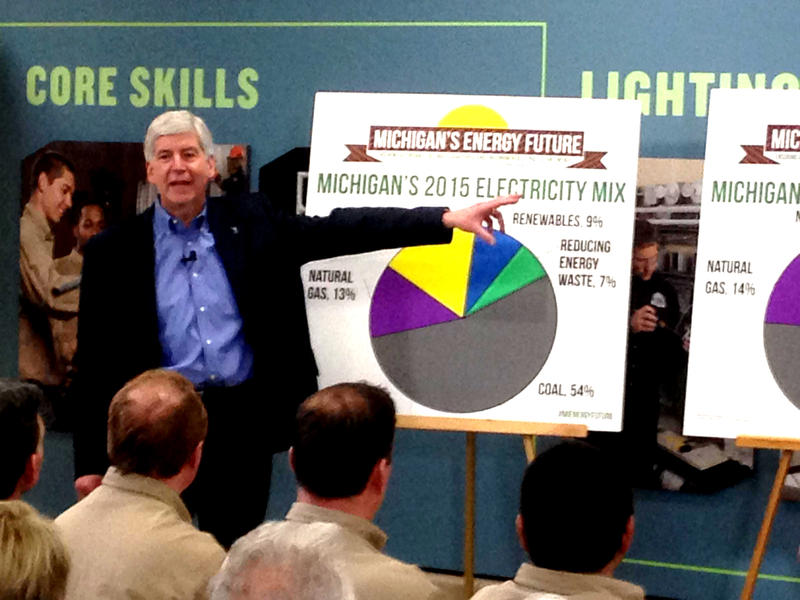
In the State Sherman & Forshee & Cooper 1-33A EOR project, 51 tons of CO2, a greenhouse gas, was released to atmosphere. While 51 tons of CO2 released to atmosphere might be a small relative to the CO2 released to atmosphere by a traditional coal fired power plant, it is a misguided precedent for Michigan to allow or tax incentivize pumping CO2 to atmosphere. Establishing eminent domain dignitas for CO2 pipelines for CCS is an important step RMP supports toward the sequestration of CO2 greenhouse gas. But, tax incentivizing CO2’s release to atmosphere is counter-intuitive. Most all Antrim gas processing facilities in Michigan separate CO2 from CH4 and vent the CO2 to atmosphere. How is venting CO2 to atmosphere that would otherwise be sequestered in the Antrim formation climate friendly? We will look in depth at CO2 recovery projects in Michigan and keep you posted on what we can find out. Keep checking back to www.respectmyplanet.org each month to read about goings on in the Michigan Basin related to energy production and CO2 for enhanced recovery/sequestration.
In other news in Michigan oil & gas, it was a pretty slow month. With permit and app data only received through May 22, we see only 7 new applications for wells in all of Michigan bringing the YTD total up to 38. The 7 apps were comprised of 1 gas well and 6 oil wells. 5 of those 7 apps were for new wells while 2 were for re-entry. The gas well app and 1 oil well app were for re-entry.

8 new permits were issued by Michigan’s OOGM in May. WyoTex is permitted for two more A1 horizontal projects in Manistee county.

7 wells were reported plugged through May 22, 2015.

Key Performance Indicators
Although there is not a direct proportion between apps and permits to wells drilled and completed, there is a direct relationship between applications made, permits issued, wells drilled, and wells completed. Below are some key performance indicators or KPI’s in the Michigan oil patch that can be helpful in supporting the findings we publish.
The 5 Year Trend Number of Permits Issued Per Year KPI:
The number of permits issued each year is indicative of interest in Michigan hydrocarbon exploration. We exclude the first year 1927 from our ranking system as permits were partial that year. Using 1928 as the first full year of recorded permit history in Michigan we have data for 87 years of activity. All rankings then are the number of permits in the year specified out of 87 total years. The apex year for permits issued in Michigan was 1992 with 2,024 permits issued. The nadir point was 1931 with 111 permits issued. The 5YR Trend Permits Issued KPI looks at the permits issued ranking over the last five years. This KPI will remain static through 2015 and analyzed against the 2015 permits as we go. Below is the summary of the year, the number of permits issued, and that year’s rank with a denominator of 87 years.
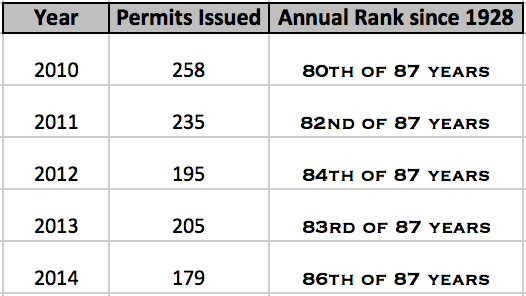
The Apps to Plugs Ratio KPI:
The apps to plugs ratio is self explanatory. By looking at the number of applications to wells plugged KPI we can see wells coming vs wells going. This KPI along with the previous one supports our original 2014 & 2015 outlook post with more numbers and data.
2015 Apps to Plugs Ratio KPI:
38 Applications : 110 Wells Plugged
The Permits to Plugs Ratio KPI:
The permits to plugs ratio is nearly the same as the apps:plugs ratio but with permits instead of applications.
2015 Permits to Plugs Ratio KPI:
44 Permits Issued : 110 Wells Plugged
In other news in Michigan oil & gas exploration we note 6 new production unit numbers.
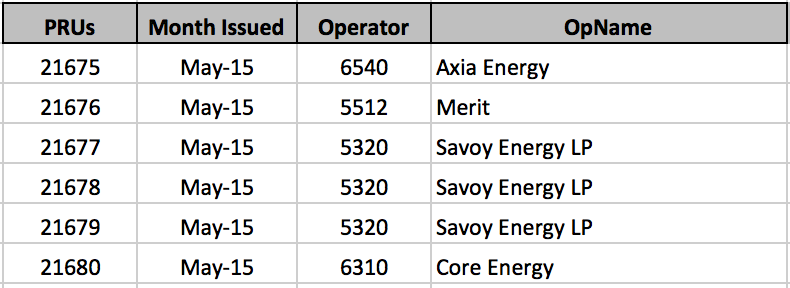
Two new fields were added to Michigan data tables in May of 2015. One gas field in the Burnt Bluff formation and one oil field in the Niagaran formation.

In other news in Michigan oil & gas production the following activity is noted:
On permit# 61061 – Smith 1-28, an application to change well status (ACOWS) was filed to use high volume hydraulic fracturing (HVHF) in the Antrim formation. Another well 61072, the Vondruska 1-24, also received an ACOWS to HVHF. respectmyplanet.org’s homepage shows all HVHF markers in Michigan’s all time oil & gas history with the first HVHF well being permitted in 2008; these two wells targeting the Antrim at 3,000 feet have been added to our homepage. You can see these two newly added locations in the middle of the state with white “PW” markers when you load our main page at www.respectmyplanet.org.
The Merten 1-24HD well, which is also on our homepage, received an ACOWS to stimulate the A1 using crude oil as a completion fluid. If the A1 stimulation is unsuccessful, an application to attempt to plug back and stimulate the Antrim formation was also received by the OOGM.
Whiting Oil & Gas Corporation transferred ownership of 11 wells in Presque Isle and 4 wells in Livingston county to a company named White Rock LLC based in Dallas Texas. One of the wells in Livingston county is the well located at the General Motors proving grounds in Milford.
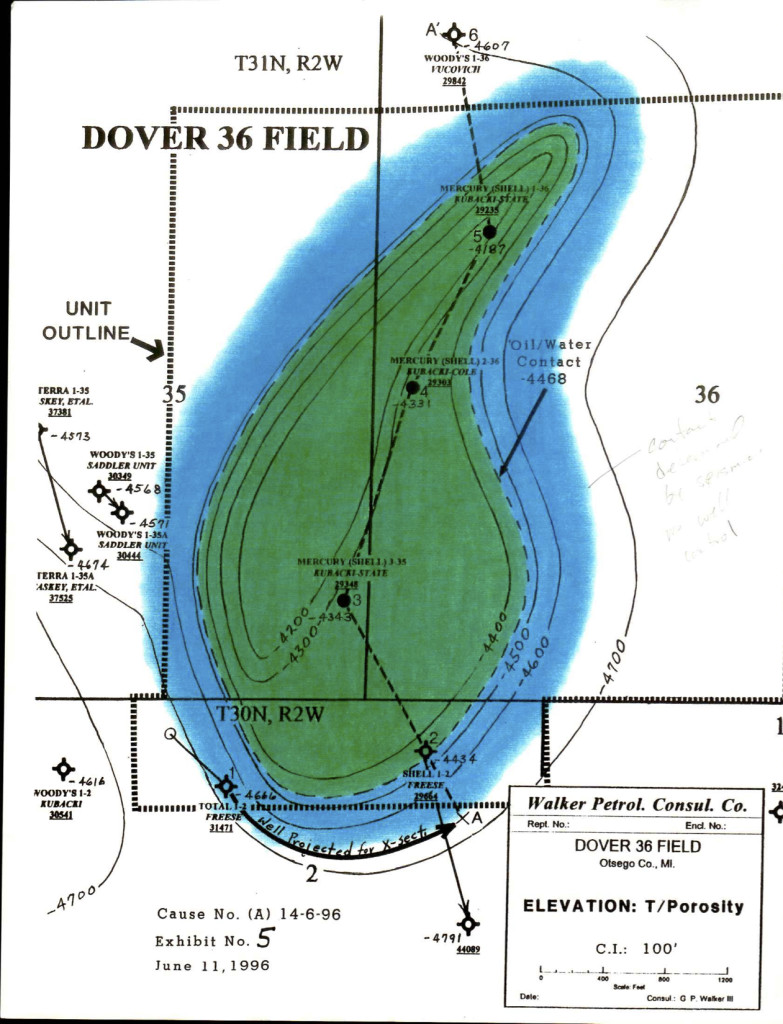
That’s about it for the May edition of the Michigan Oil & Gas Monthly. Again, our top story is EOR using liquified carbon dioxide. The featured image in this month’s article is a Praxair truck carrying liquid CO2 on May 28, 2015 which was just a couple days ago at the time of this article’s publish date. EOR using CO2 began in the oil fields of West Texas in 1972. By 1994, there were approximately 50 different active CO2 projects in the United States of America. In 1996, Mercury was granted permission by Hal Fitch to use CO2 for EOR in the Dover 36 field in Michigan. This was an early CO2 for EOR project in Michigan but CO2 was used back even further in the Norwich and Beaver Creek fields. As always, RMP has additional information about CO2 for EOR and we will keep you up to date on EOR projects and CCS projects in future posts. We will continue to follow the important topic of CCS and CO2 released to atmosphere as we continue to stay on guard for Michigan’s fresh water reserves. If you’re interested in learning about sustainable energy production and environmental protection follow RMP on twitter and/or facebook and don’t forget to subscribe to our YouTube channel.


